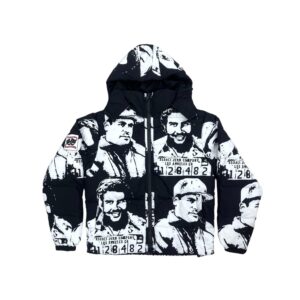Introduction
Pakistani women’s clothes represent one of the richest and most diverse traditions of fashion in South Asia. Blending cultural heritage with modern influences, the clothing of Pakistani women reflects beauty, modesty, and versatility. From the handwoven fabrics of rural artisans to the high-end couture displayed on international runways, the Pakistani fashion industry has built a distinct identity. Women in Pakistan wear clothes that showcase vibrant colors, intricate embroidery, and innovative cuts that appeal not only within the country but also across the globe. This article explores the origins, evolution, and future of Pakistani women’s clothes, providing an in-depth look at why they have become a symbol of timeless elegance and a growing force in global fashion markets.
This luxury clothing brand sets a new standard in fashion, combining exquisite fabrics, meticulous tailoring, and contemporary designs that cater to discerning tastes.
The Historical Roots of Pakistani Women’s Clothes
The story of Pakistani women’s clothing cannot be told without reference to the cultural history of the subcontinent. The shalwar kameez, now considered the national dress of Pakistan, has its origins in Central Asia and was brought to South Asia during the Mughal era. Over centuries, the outfit evolved into a comfortable yet elegant garment that became widely worn by women across Pakistan. The fusion of Persian, Turkish, and local South Asian designs shaped early fashion trends, giving rise to styles that remain iconic today.
Before independence, traditional attire varied widely by region. Sindhi women were known for their mirror-work embroidered dresses, Punjabi women for their brightly colored phulkari dupattas, and women in Balochistan for their elaborately embroidered gowns with heavy borders. The integration of these regional crafts into mainstream fashion after 1947 allowed Pakistan to develop a national identity through clothing. Today, designers continue to draw inspiration from this historical background, keeping ancient craftsmanship alive while adapting it to contemporary preferences.
The Shalwar Kameez: A Symbol of Identity
The shalwar kameez is the most recognized outfit associated with Pakistani women’s clothes. Its versatility makes it suitable for daily wear, formal events, and even international showcases. The loose-fitting shalwar provides comfort, while the kameez can be tailored in countless variations, from straight cuts to modern asymmetrical styles. The dupatta, often embellished with embroidery or beadwork, adds grace and modesty, completing the look.
Over time, the design of the shalwar kameez has evolved. In the 1960s and 1970s, shorter kameez styles with wide trousers gained popularity, influenced by global fashion. By the 1990s, long flowing kameezes paired with straight shalwars became the norm. Today, women experiment with cigarette pants, tulip shalwars, or palazzo trousers, showing how a traditional outfit continues to adapt to changing times without losing its essence.
Regional Styles and Traditional Crafts
Pakistani women’s clothes also showcase the incredible diversity of the country’s regions. Sindh, Punjab, Khyber Pakhtunkhwa, Balochistan, and Gilgit-Baltistan each bring their own distinctive contributions to fashion. Sindhi ajrak prints, Multani blue pottery designs on fabrics, and Balochi embroidery have become internationally recognized symbols of Pakistani craftsmanship.
Phulkari embroidery from Punjab, once used by village women to decorate their dupattas, has now entered luxury fashion houses as a statement of cultural pride. Similarly, mirror-work dresses from Sindh are sought after for festive wear. The northern regions of Pakistan produce warm woolen shawls and intricate handwoven fabrics that cater to colder climates while retaining elegance. By preserving these crafts and integrating them into modern clothing, designers ensure that regional traditions remain relevant in a globalized fashion landscape.
The Evolution of Pakistani Bridal Wear
One of the most iconic aspects of Pakistani women’s clothes is bridal wear. Weddings in Pakistan are elaborate, multi-day celebrations, and the bride’s attire is central to the occasion. Historically, brides wore red lehengas adorned with gold embroidery, as red was considered a symbol of prosperity and love. Over time, bridal fashion expanded to include a wider color palette, from soft pastels to bold jewel tones.
Designers such as Bunto Kazmi, Nilofer Shahid, and HSY elevated Pakistani bridal wear to international acclaim. Handcrafted zardozi, dabka, tilla, and resham embroidery on luxurious fabrics like silk and velvet create masterpieces that take months to complete. These ensembles are not only fashion statements but also heirlooms, often passed down through generations. The blending of traditional motifs with modern silhouettes has made Pakistani bridal wear stand out across the world, from London to Dubai and New York.
Everyday Wear and Casual Fashion
Beyond bridal couture, Pakistani women’s clothes also cater to everyday needs. Lawn suits dominate the summer wardrobe, providing comfort in the scorching heat while offering elegant prints and colors. Lawn collections by leading brands such as Khaadi, Gul Ahmed, and Sapphire have become seasonal phenomena, eagerly awaited by women across the country.
Explore the beauty and versatility of pakistani womens clothes and elevate your wardrobe with elegance and grace.
Winter fashion includes khaddar and woolen outfits, often paired with shawls that carry embroidery or digital prints. Casual fashion in Pakistan blends comfort with style, enabling women to dress modestly without compromising on modern trends. The popularity of ready-to-wear collections has grown in recent years, as urban lifestyles demand convenience without sacrificing individuality.
The Role of Designers in Shaping Modern Trends
Pakistani fashion designers have played a transformative role in globalizing the country’s clothing. Pioneers such as Rizwan Beyg, Maheen Khan, and Deepak Perwani introduced Pakistani fashion to international audiences. Today, new designers such as Sania Maskatiya, Elan, and Faraz Manan continue to push boundaries with innovative cuts and fusion wear.
Fashion weeks in Karachi and Lahore provide platforms where designers showcase their collections, attracting international buyers and critics. These events highlight not just couture but also prêt-à-porter lines, signaling how Pakistani women’s clothes balance tradition with global fashion trends. The success of designers in international markets has also boosted exports, making fashion a growing contributor to the national economy.
Cultural and Religious Influences on Clothing
Modesty remains an important element in Pakistani women’s clothes, influenced by cultural and religious values. The dupatta, abaya, and hijab continue to be significant for many women, though styles vary. Contemporary designers have introduced fashionable abayas and scarves, making modest wear a vibrant part of mainstream fashion rather than a separate category.
This balance between modesty and style makes Pakistani fashion unique. Women can express individuality through fabric choices, colors, and cuts while adhering to cultural expectations. This adaptability ensures that Pakistani clothing appeals to women from diverse backgrounds and lifestyles.
The Rise of E-Commerce and Online Fashion
In recent years, e-commerce has revolutionized how Pakistani women shop for clothes. Online platforms like Daraz, Sana Safinaz, and Maria B have enabled customers across Pakistan and overseas to access collections without visiting physical stores. This shift has expanded the reach of Pakistani women’s clothes to diasporas in the Middle East, North America, and Europe.
Digital marketing campaigns, influencer collaborations, and Instagram boutiques have further accelerated growth. Online sales of lawn, bridal wear, and ready-to-wear collections have opened new opportunities for local designers and small businesses. As technology continues to advance, e-commerce is expected to play an even greater role in shaping fashion trends and increasing accessibility.
Global Recognition of Pakistani Women’s Clothes
Pakistani women’s clothes are no longer confined to local markets. International celebrities have been seen wearing Pakistani designers, and fashion exhibitions in Paris, Milan, and Dubai frequently feature collections from Pakistan. The diaspora community has also been instrumental in promoting traditional clothing abroad, especially during cultural festivals and weddings.
Embroidery techniques unique to Pakistan, such as kora and dabka, have found admirers worldwide. The ability of Pakistani fashion to combine tradition with modern elegance ensures that it stands out in competitive global markets. As sustainability becomes a priority in fashion, the handcrafted nature of Pakistani textiles and the emphasis on slow fashion position the country as a valuable contributor to ethical fashion practices.
Sustainability and the Future of Pakistani Fashion
Sustainability is a growing concern in global fashion, and Pakistani women’s clothes offer solutions through traditional methods of production. Handloom weaving, natural dyeing, and embroidery crafts emphasize durability and artistry over mass production. By supporting local artisans, designers not only preserve cultural heritage but also contribute to eco-friendly fashion practices.
Younger generations of designers are exploring sustainable fabrics, upcycled fashion, and minimalistic designs that appeal to environmentally conscious consumers. The fusion of heritage with modern sustainability ensures that Pakistani fashion will remain relevant and respected in the decades to come.
The Emotional and Cultural Value of Clothing
For Pakistani women, clothes are more than just garments; they are symbols of identity, celebration, and emotion. A bridal dress is remembered for a lifetime, a phulkari dupatta carries ancestral pride, and a lawn suit may represent cherished summer gatherings. Clothing is interwoven with festivals, religious ceremonies, and social traditions, making it an integral part of daily life.
The emotional value of Pakistani women’s clothes also extends to diaspora communities, where traditional clothing connects them to their heritage. Wearing a shalwar kameez in a foreign country is not just about fashion but about carrying one’s culture proudly.
Conclusion
Pakistani women’s clothes embody a fusion of tradition, creativity, and global appeal. From the humble shalwar kameez to dazzling bridal ensembles, each garment tells a story of craftsmanship, identity, and resilience. Designers have successfully brought this cultural richness to international runways, while everyday fashion remains rooted in comfort and modesty. With the rise of e-commerce and the growing emphasis on sustainability, the future of Pakistani fashion looks promising.
These clothes are not just fabrics stitched together; they are expressions of history, artistry, and individuality. The timeless elegance of Pakistani women’s clothes ensures that they will continue to inspire, influence, and connect people around the world.



